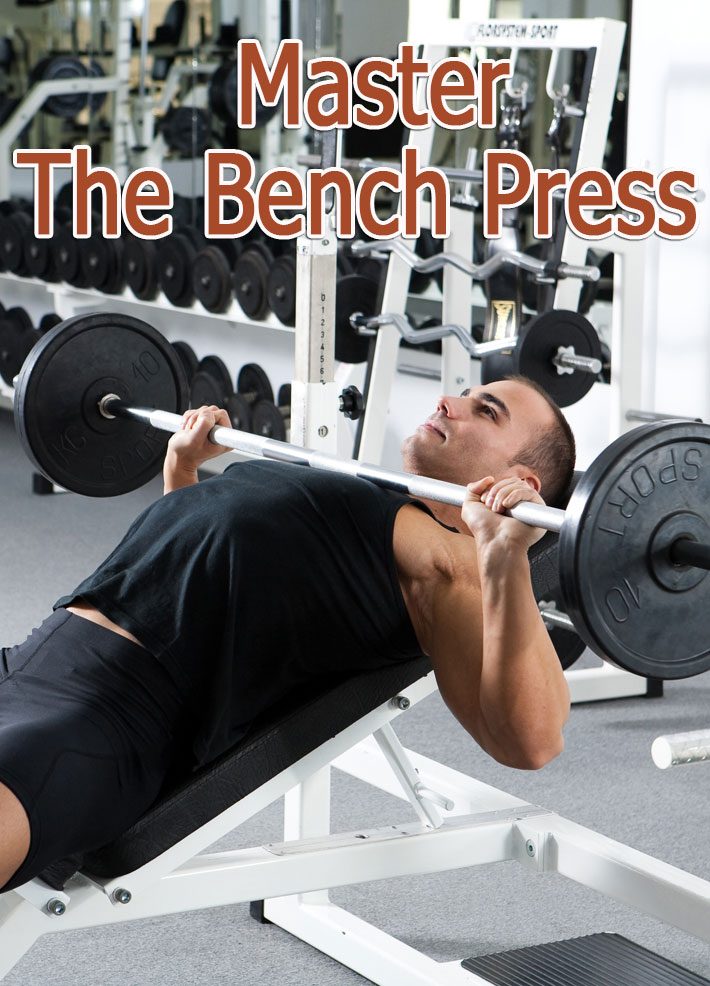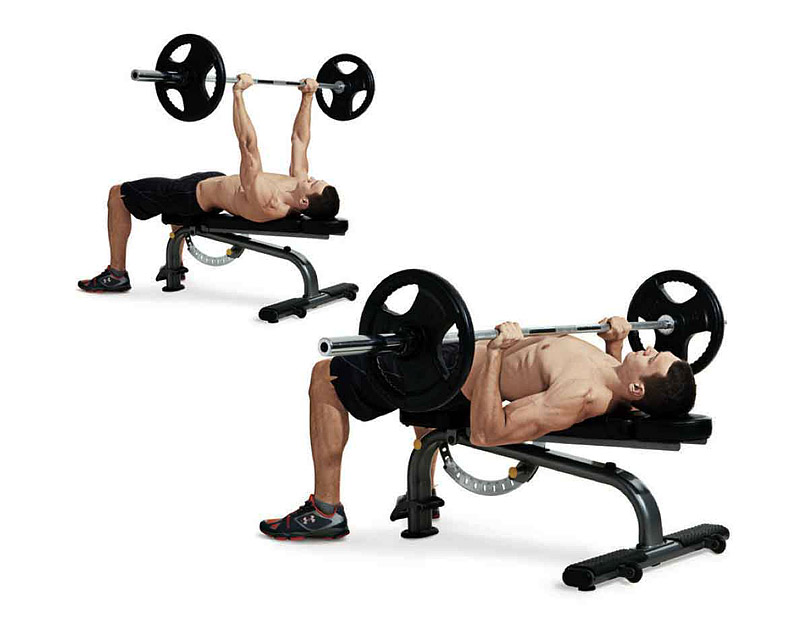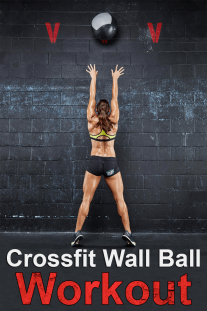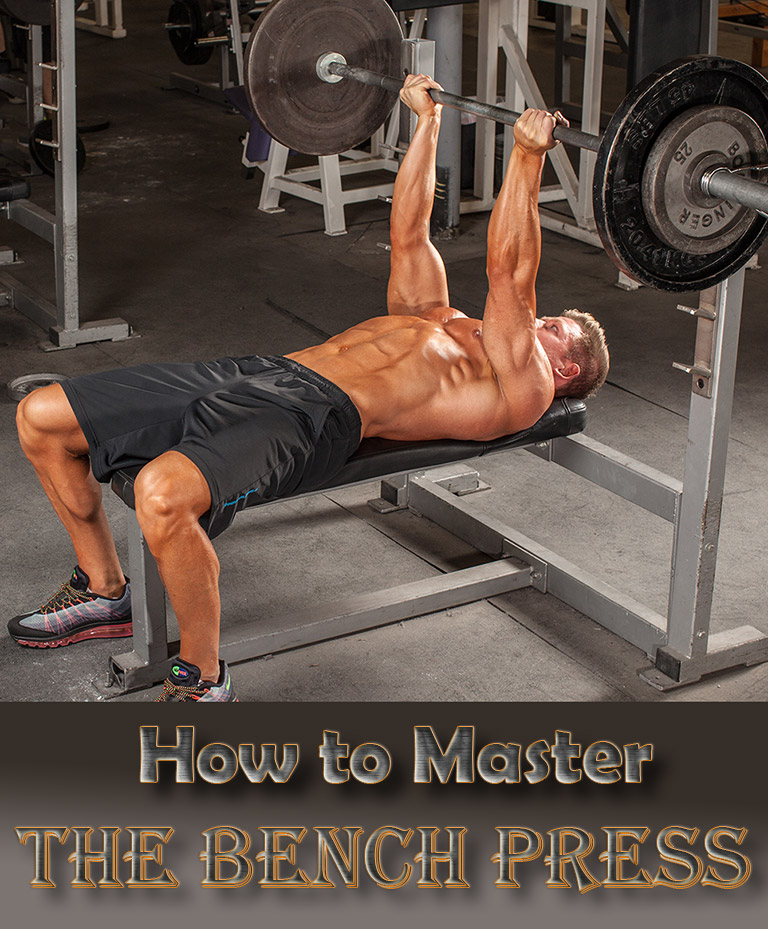
The bench press builds the muscles of the chest as well as the triceps of the back of the arms and the front deltoid shoulder muscles.
You can do this exercise with barbells or dumbbells — or with a Smith machine, which constrains the path of the barbell and makes the exercise a little easier. Other variations include inclining or declining the bench to emphasize the upper or lower chest muscles.
If you’re training for competition powerlifting, you should contact a professional coach for personal instruction.
Starting Position
- Lie flat on the bench under the rack that holds the bar. Your eyes should be approximately aligned with the front of the barbell rack uprights.
- Butt, shoulders and head should be flat on the bench with a slight (neutral) bend in the spine. Feet should be flat on the floor and relatively wide apart.
- Try a few lifts without any additional weights to warm up and to get the feel of the bar.
- When you’re ready to add weight, fit the appropriate barbell plates to the bar and position yourself for the lift.
- Grasp the bar with your thumbs on the outside of your closed fist, overhand grip, with arms slightly wider than shoulder width apart. The angle of the upper arms should be at about 45 degrees to the body.
- If you don’t use the specialized bench press rack, a standard flat bench can be used with dumbbells or a light barbell. Or you can use a Smith machine.
- If you are not at ease with feet on the floor because of short legs, use blocks or weight plates under the feet to boost height rather than placing legs on the bench, which reduces stability.

Exercise Movement
- Remove the barbell from the rack and lock the elbows out before lowering the bar to the chest at the nipple line. Don’t move the bar in an arc from the rack directly to the chest position. With the Smith machine you can’t do this; the path is restricted.
- Take a deep breath and raise the bar to above the chest with arms extended, exhaling while you push upward and aiming consistently at the same spot on the ceiling. Don’t watch the bar; focus on the ceiling.
- Return the bar to just above the chest and repeat the exercise.
- If you have any concerns about shoulder joint stability, don’t lower the bar so far that the top part of the arm falls much below parallel.
- To get used to doing the bench press, and if you are going to lift heavy weights, get the assistance of a “spotter” who stands behind the rack and assists with the bar when you have trouble lifting.
- To finish, replace the bar on the rack from the locked out position. Move the bar backward gradually until you feel the rack uprights, then lower the bar to the rack rest. Do not try to hit the rack rests directly. If you miss, you can lose control, which can be dangerous.
- If you intend to lift heavy weights, you should ask someone with experience to “spot” for you by offering assistance when required.
- Bench pressing can be dangerous. Make sure the path of the bar is not low over the mouth and neck region when unracking or racking the bar. That means you should move the weight “from” and “to” the rack from an arms extended position and not low across the neck and face.
- The grip on the bar should normally be wide enough so that the elbow joints are at least at right angles and the forearms in a perpendicular plane. A slightly wider or narrower grip can also be used with experience.
- You can “lock-out” your elbows, contrary to some safety advice that is generally misguided. Just make sure you don’t lock them out suddenly or explosively.
- The hand grip should be overhand and feature the thumbs placed under the bar and across the top of the fingers. Don’t place the thumbs behind the bar or locked beneath the fingers.
- Keep your butt and head flat on the bench and feet flat on the floor for stability, but don’t push your head into the bench to assist the lift; firm up the neck muscles instead.





Leave a Reply